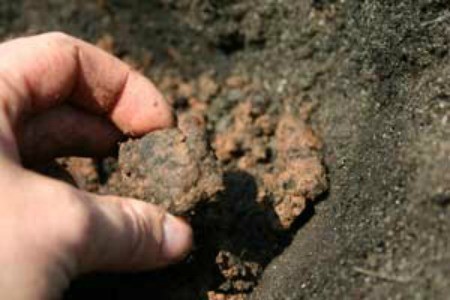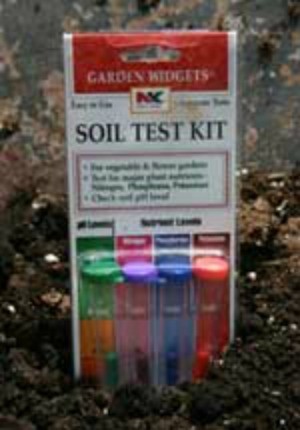Maintaining good soil is your most important task as a gardener-even more important than maintaining your plants. If you're starting a new garden or your plants and flowers just aren't growing well despite your best efforts, then having your soil tested probably makes sense.
Sending your soil to a laboratory, however, can be both costly and time consuming and unless you're a trained agronomist, the results are often difficult to understand.
Fortunately, there are easy ways to test your soil at home. Of course, they are not as scientifically accurate or exacting as laboratory tests, but they will provide you with a basic understanding of your soil.

There are a couple of ways to determine if there are high quantities of rich, organic matter in your soil.
Worms: Because earthworms naturally gravitate to areas high in organic nutrients, you can tell a lot about your soil's health by the number of worms present in your garden.
Sift through a cubic foot of soil from your garden (1ft x 1ft x 1ft hole) and count the number of worms you find. Soil healthy in organic matter will have at least 10 worms in a cubic foot-a good barometer of the overall life present in your soil.
Fewer worms mean less life is present and you need to increase the nutrients available in your soil.
Tomatoes: If you garden is lacking in nutrients, your plants will be usually your best indicators. Tomatoes, for example, respond to a variety of soil deficiencies:
Nitrogen Fixing Plants: Dig up and examine the nodules of nitrogen fixing plants, like peas, beans, alfalfa and clover. When broken open, the nodules should be pink if they are fixing and storing nitrogen like they are supposed to be.

Look no further than the native weeds growing in and around your garden to get an idea of your soil's pH levels. Hawkweed, horsetail, lady's thumb, dock and sorrel, for example, all prefer to grow in acidic soil. You can find inexpensive, do-it-yourself pH test kits available at most garden centers.
Unlike the weather, soil is one of the few aspects of gardening over which we have total control. If we have a basic understanding of what type of soil we're starting with, we can amend the soil as needed and achieve the best balance for our plants. If after these simple tests you still feel the need to have you soil tested professionally, contact your local extension service for advice specific to your area.